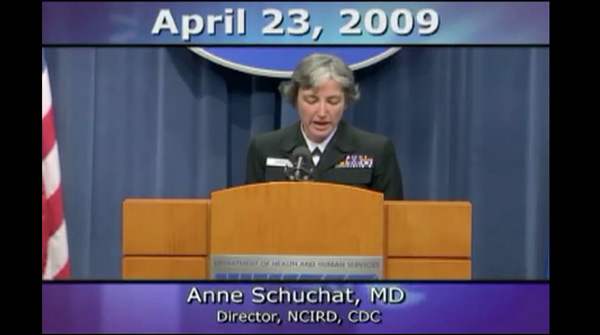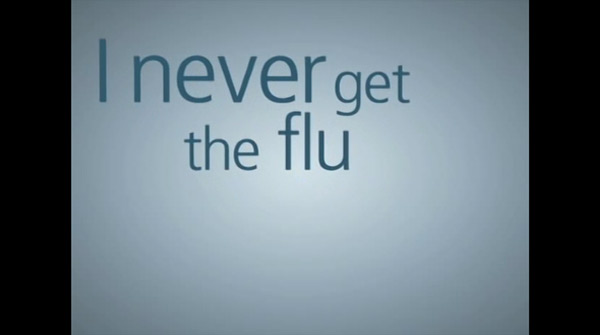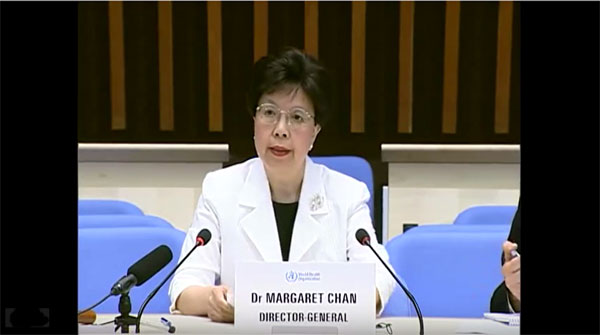2009 H1N1 Pandemic (H1N1pdm09 virus)

In the spring of 2009, a novel influenza A (H1N1) virus emerged. It was detected first in the United States and spread quickly across the United States and the world. This new H1N1 virus contained a unique combination of influenza genes not previously identified in animals or people. This virus was designated as influenza A (H1N1)pdm09 virus. Ten years later work continues to better understand influenza, prevent disease, and prepare for the next pandemic.
The (H1N1)pdm09 virus was very different from H1N1 viruses that were circulating at the time of the pandemic. Few young people had any existing immunity (as detected by antibody response) to the (H1N1)pdm09 virus, but nearly one-third of people over 60 years old had antibodies against this virus, likely from exposure to an older H1N1 virus earlier in their lives. Since the (H1N1)pdm09 virus was very different from circulating H1N1 viruses, vaccination with seasonal flu vaccines offered little cross-protection against (H1N1)pdm09 virus infection. While a monovalent (H1N1)pdm09 vaccine was produced, it was not available in large quantities until late November—after the peak of illness during the second wave had come and gone in the United States. From April 12, 2009 to April 10, 2010, CDC estimated there were 60.8 million cases (range: 43.3-89.3 million), 274,304 hospitalizations (range: 195,086-402,719), and 12,469 deaths (range: 8868-18,306) in the United States due to the (H1N1)pdm09 virus.
Since the 2009 H1N1 pandemic, the (H1N1)pdm09 flu virus has circulated seasonally in the U.S. causing significant illnesses, hospitalizations, and deaths.
Additionally, CDC estimated that 151,700-575,400 people worldwide died from (H1N1)pdm09 virus infection during the first year the virus circulated.** Globally, 80 percent of (H1N1)pdm09 virus-related deaths were estimated to have occurred in people younger than 65 years of age. This differs greatly from typical seasonal influenza epidemics, during which about 70 percent to 90 percent of deaths are estimated to occur in people 65 years and older.
Though the 2009 flu pandemic primarily affected children and young and middle-aged adults, the impact of the (H1N1)pdm09 virus on the global population during the first year was less severe than that of previous pandemics. Estimates of pandemic influenza mortality ranged from 0.03 percent of the world’s population during the 1968 H3N2 pandemic to 1 percent to 3 percent of the world’s population during the 1918 H1N1 pandemic. It is estimated that 0.001 percent to 0.007 percent of the world’s population died of respiratory complications associated with (H1N1)pdm09 virus infection during the first 12 months the virus circulated.
The United States mounted a complex, multi-faceted and long-term response to the pandemic, summarized in The 2009 H1N1 Pandemic: Summary Highlights, April 2009-April 2010. On August 10, 2010, WHO declared an end to the global 2009 H1N1 influenza pandemic. However, (H1N1)pdm09 virus continues to circulate as a seasonal flu virus, and cause illness, hospitalization, and deaths worldwide every year.
Historical Resources
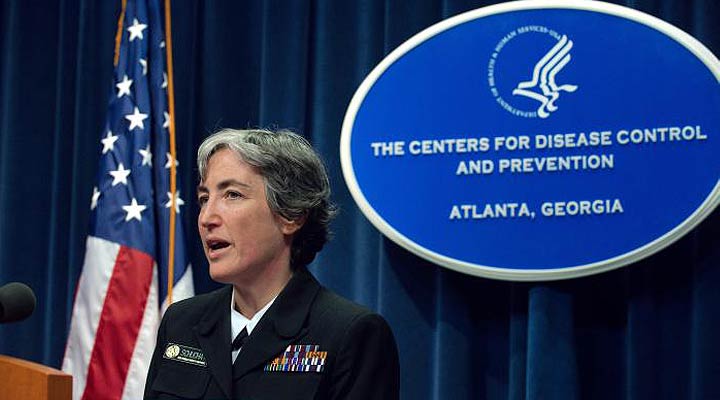
Read a summary of key events of the 2009 H1N1 pandemic and CDC’s response activities between April 2009-April 2010.
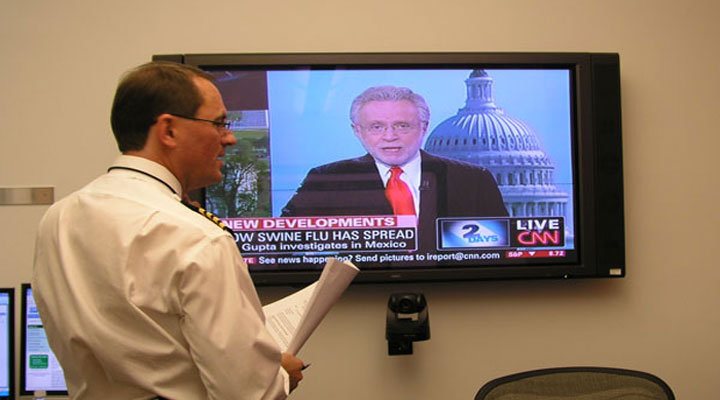
Learn more about the timeline of major events that took place during the 2009 H1N1 pandemic.

View images taken during CDC’s response to the 2009 H1N1 pandemic.
Videos from 2009 H1N1 Pandemic
- The Deadliest Flu: The Complete Story of the Discovery and Reconstruction of the 1918 Pandemic Virus
- Influenza virology and animal transmission studies
- Antigenic and Genetic Characteristics of Swine-Origin 2009 A(H1N1) Influenza Viruses Circulating in Humans [327 MB, 7 Pages]
- Cross-Reactive Antibody Responses to the 2009 Pandemic H1N1 Influenza Virus
- 2009 Pandemic Influenza A (H1N1): Pathology and Pathogenesis of 100 Fatal Cases in the United States
- Cytokine and Chemokine Profiles in Lung Tissues from Fatal Cases of 2009 Pandemic Influenza A (H1N1): Role of the Host Immune Response in Pathogenesis
- Transmission and Pathogenesis of Swine-Origin 2009 A(H1N1) Influenza Viruses in Ferrets and Mice
- Epidemiological and Clinical Studies
- The 2009 H1N1 Influenza Pandemic: Field and Epidemiologic Investigations
- Emergence of a Novel Swine-Origin Influenza A (H1N1) Virus in Humans
- Emergence of a Novel Swine-Origin Influenza A (H1N1) Virus in Humans (Laboratory Supplemental) [4.2 MB, 8 Pages]
- Hospitalized Patients with 2009 H1N1 Influenza in the United States, April–June 2009
- Hospitalized Patients with 2009 H1N1 Influenza in the United States, April–June 2009 (Supplemental) [140 KB, 9 Pages]
- Clinical Aspects of Pandemic 2009 Influenza A (H1N1) Virus Infection
- Clinical Aspects of Pandemic 2009 Influenza A (H1N1) Virus Infection (Supplemental) [262 KB, 53 Pages]
- Global mortality estimates for the 2009 Influenza Pandemic from the GLaMOR project: a modeling study
- Pandemic Preparedness and Response —Lessons from the H1N1 Influenza of 2009
- *Estimating the burden of 2009 pandemic influenza A (H1N1) in the United States (April 2009-April 2010).
- **Estimated global mortality associated with the first 12 months of 2009 pandemic influenza A H1N1 virus circulation: a modelling study:
- Dawood FS, Iuliano AD, Reed C, Meltzer MI, Shay DK, Cheng PY, Bandaranayake D, Breiman RF, Brooks WA, Buchy P, Feikin DR, Fowler KB, Gordon A, Hien NT, Horby P, Huang QS, Katz MA, Krishnan A, Lal R, Montgomery JM, Mølbak K, Pebody R, Presanis AM, Razuri H, Steens A, Tinoco YO, Wallinga J, Yu H, Vong S, Bresee J, Widdowson MA.Estimated global mortality associated with the first 12 months of 2009 pandemic influenza A H1N1 virus circulation: a modelling study. Lancet Infect Dis. 2012 Sep;12(9):687-95.
- Shrestha SS, Swerdlow DL, Borse RH, Prabhu VS, Finelli L, Atkins CY, Owusu-Edusei K, Bell B, Mead PS, Biggerstaff M, Brammer L, Davidson H, Jernigan D, Jhung MA, Kamimoto LA, Merlin TL, Nowell M, Redd SC, Reed C, Schuchat A, Meltzer MI. Estimating the burden of 2009 pandemic influenza A (H1N1) in the United States (April 2009-April 2010). Clin Infect Dis. 2011 Jan 1;52 Suppl 1:S75-82.
